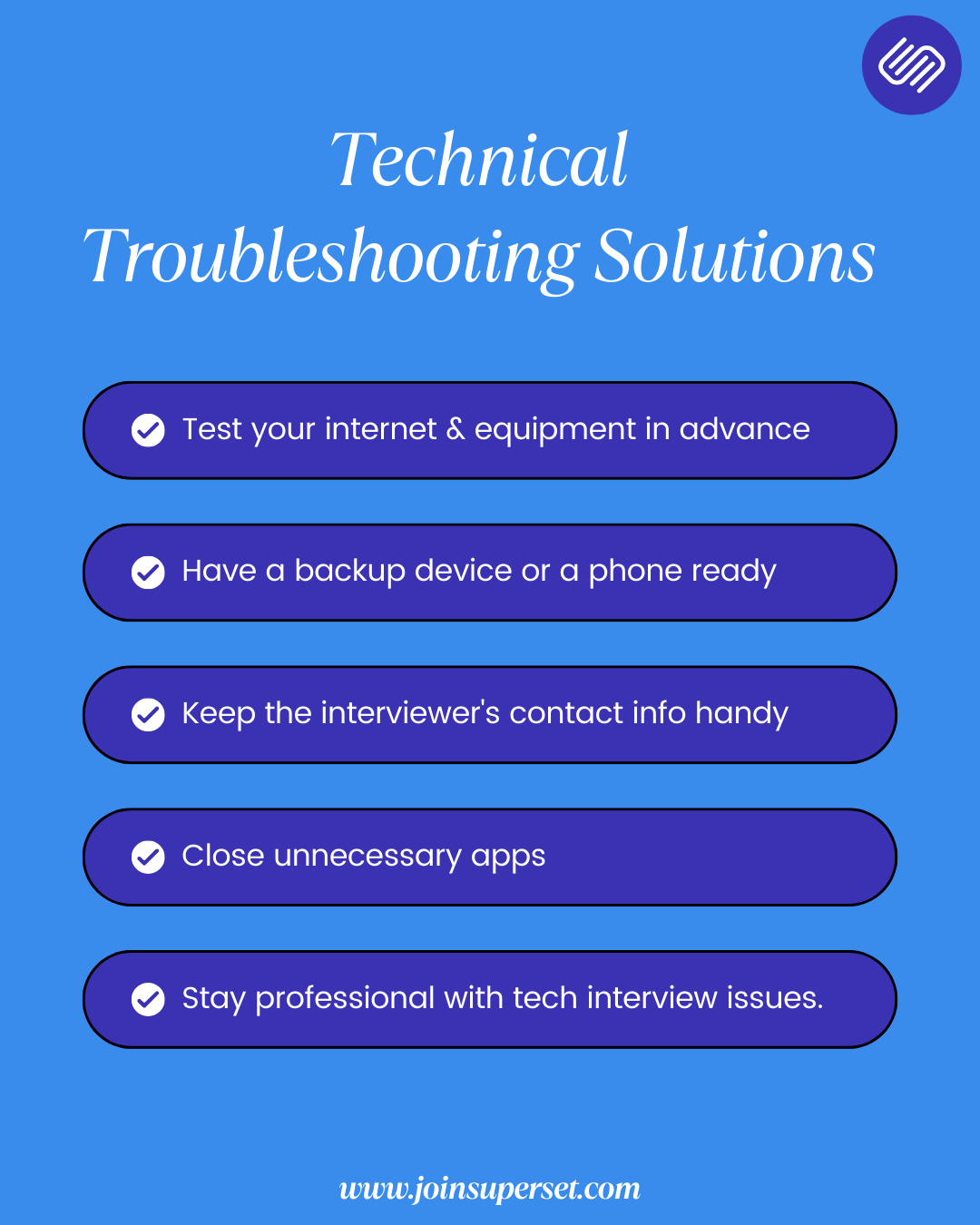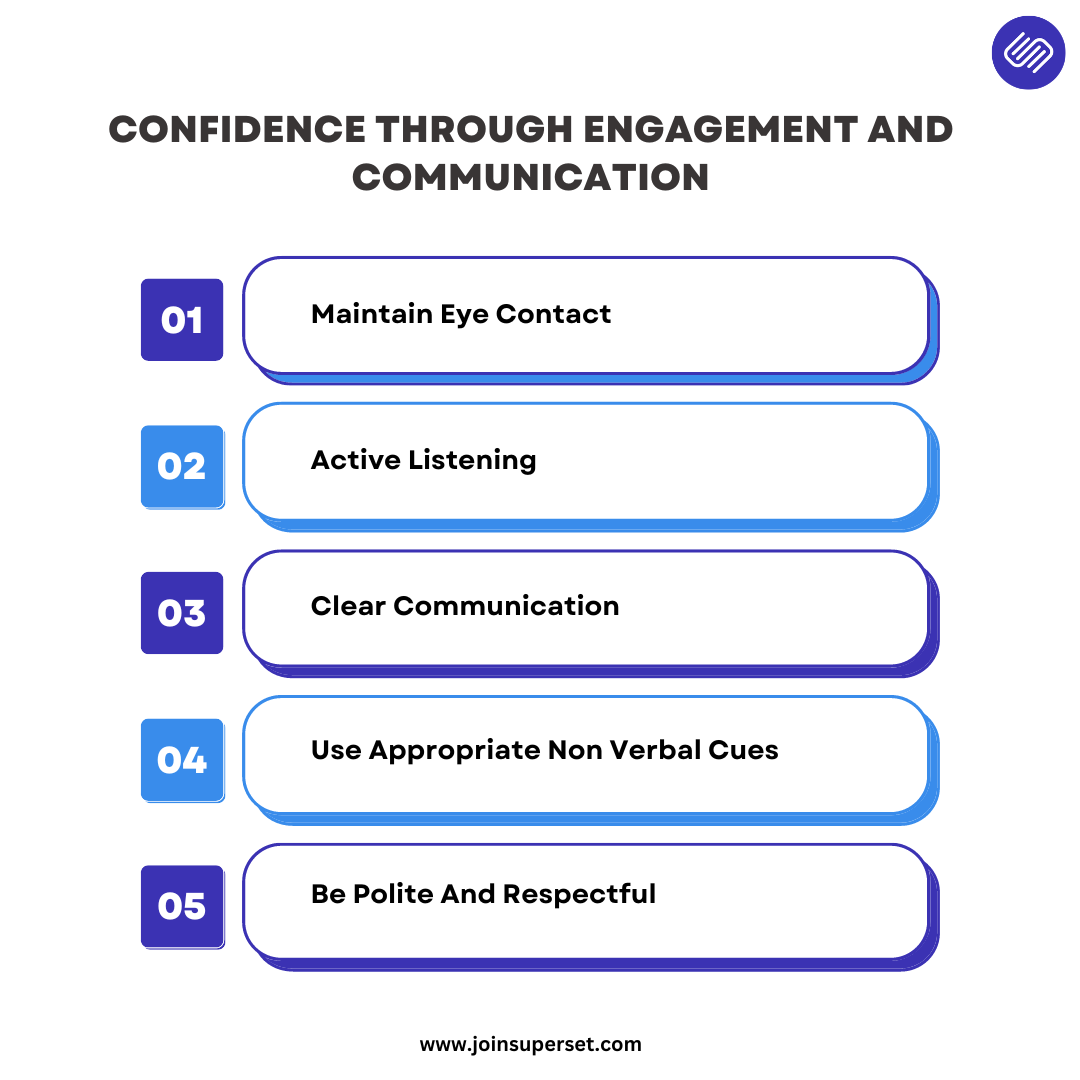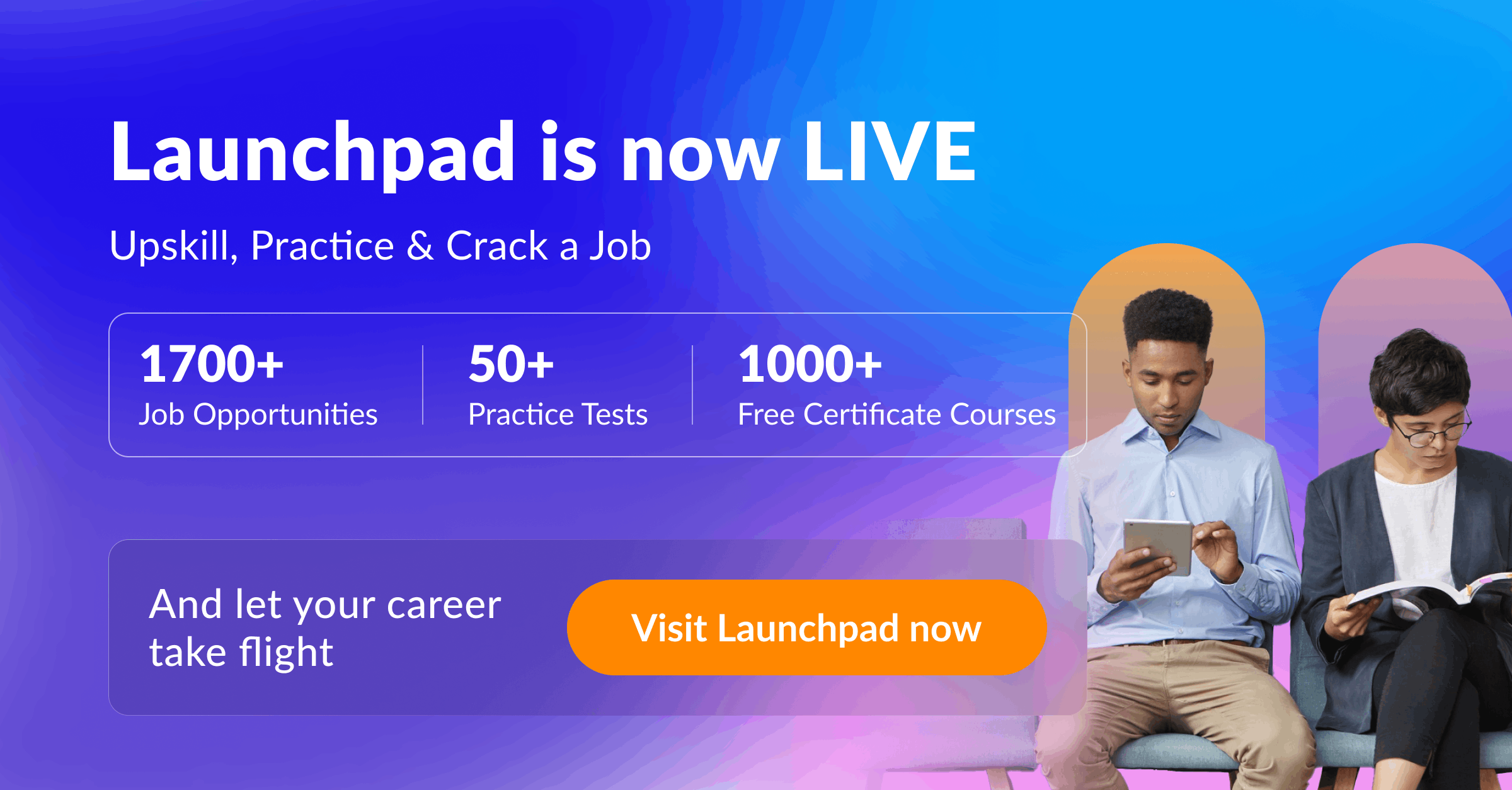Introduction
As a student, the quest for a successful career starts long before you graduate. You must not only excel in your academic pursuits but also prepare for the challenges of entering the job market. In this comprehensive guide, we’ll explore how to balance academics and placement preparation effectively. From keeping your resume ready to mastering interview skills and crafting the perfect cover letter, we’ll cover it all. Let’s dive in.

Keeping Your Resume Ready for Your Placement
Your resume is a vital component of your job search. It’s the first impression you make on potential employers, and it can significantly impact your chances of securing an interview and, ultimately, a job offer. In this section, we’ll explore the fundamental aspects of creating a strong resume that will help you stand out in a competitive job market.
The Foundation of Your Job Search
Your resume serves as the foundation of your job search strategy. It’s a concise representation of your qualifications, skills, and experiences, and it should effectively communicate why you’re the right fit for a particular role. Here, we’ll cover the essential elements of a compelling resume:
Contact Information
Ensure that your contact information is up-to-date and easily accessible. This includes your name, phone number, email address, other portfolios and LinkedIn profile.
Professional Summary/Objective
Craft a brief summary that highlights your career goals and key strengths. This section should grab the reader’s attention and give them a clear sense of what you bring to the table.
Education
List your educational background, including the institutions you attended, degrees earned, and graduation dates. Include any relevant coursework or academic achievements.
Work Experience
Detail your previous work experiences, emphasizing accomplishments and responsibilities that are pertinent to the position you’re applying for. Use action verbs and quantifiable results to showcase your contributions.
Skills
Highlight your key skills, both hard and soft, that align with the job requirements. These can range from technical proficiencies to communication and teamwork skills.
Achievements and Awards
If you’ve received any awards, honours, or recognition, be sure to include them in this section to demonstrate your excellence.
Resume Builders
Creating a professional and well-structured resume is crucial, but it doesn’t have to be a daunting task. There are various online resume builders available that can simplify the process. These tools provide pre-designed templates and guidance to help you create a polished resume with ease. In this subsection, we’ll explore how these tools can assist you in crafting a standout resume.
Template Selection
Resume builder online offers a variety of templates tailored to different industries and job roles. You can choose one that aligns with the position you’re pursuing.
User-Friendly Interface
Most resume builders have user-friendly interfaces that guide you through the resume creation process, step by step. This can be particularly helpful if you’re new to resume writing.
Customization
These tools allow you to tailor your resume to match the specific job descriptions by adding, rearranging, or removing sections as needed.
Formatting and Styling
Resume creator take care of formatting and styling, ensuring that your resume looks professional and well-organized.
The Importance of Keywords
In today’s digital job market, many employers use Applicant Tracking Systems (ATS) to streamline the hiring process. These systems scan and filter resumes based on keywords and phrases relevant to the job opening. Understanding how to optimize your resume with the right keywords is crucial to ensure it gets noticed by ATS and, ultimately, human recruiters.
Identifying Keywords
In today’s competitive job market, identifying and incorporating relevant keywords in your resume is crucial. Keywords are the terms and phrases that employers often use to search for candidates with specific qualifications and skills. Here’s how you can effectively identify keywords for your industry or field of interest.
- Job Descriptions: Start by analyzing multiple job descriptions for positions you’re interested in. Highlight the keywords and phrases that frequently appear, such as specific technical skills, software proficiency, certifications, and industry-specific terminology.
- Company Research: Research the companies you’re applying to and review their websites, mission statements, and job postings. This can provide insight into the keywords and values that are important to them.
- LinkedIn Profiles: Explore LinkedIn profiles of professionals working in your desired field. Look for keywords and phrases that are common in their profiles, as these are often relevant to your industry.
- Industry Publications: Read industry-specific publications, blogs, and forums to familiarize yourself with the terminology and trends in your field. These sources are valuable for identifying keywords.
- Networking: Connect with professionals in your industry and ask them about the keywords and skills they consider most important. Networking can provide valuable insights.
Strategic Placement
Identifying keywords is only the first step; strategically placing them in your resume is equally important to maximize their impact. Here’s how to strategically place keywords in your resume.
- Professional Summary: Incorporate key keywords related to your skills and qualifications in the professional summary at the beginning of your resume. This gives a strong initial impression.
- Skills Section: Create a dedicated skills section where you list the specific technical and soft skills relevant to the job you’re applying for. Use bullet points for clarity and easy scanning.
- Work Experience Descriptions: Use keywords naturally within the descriptions of your work experiences. Highlight accomplishments and responsibilities that directly relate to the job’s requirements.
- Achievements and Awards: If you’ve received awards or recognitions related to your industry, include them in a separate section with associated keywords.
- Customize for Each Application: Tailor your resume for each job application by adjusting the placement of keywords based on the specific job description. Emphasize the most relevant skills and qualifications for that position.
Balancing Act
While keyword optimization is essential, it must be balanced with readability and cohesiveness. Here’s how to strike that balance.
- Avoid Overstuffing: Don’t overuse keywords to the point that your resume becomes unnatural or difficult to read. Employers and ATS systems can spot keyword stuffing.
- Write Naturally: Write your resume in a natural and coherent manner. Keywords should seamlessly integrate into your descriptions and make sense within the context of your work experiences.
- Prioritize Achievements: Focus on highlighting your accomplishments and the results you achieved in your previous roles. These should take precedence over keyword placement.
- Use Synonyms: Incorporate synonyms or related terms for keywords to diversify your language while maintaining the same meaning.
- Proofread: After keyword placement, proofread your resume to ensure it remains error-free and well-structured. A well-organized resume is more likely to make a positive impression.
Mastering Interview Skills
Mastering interview skills is a crucial part of your journey toward securing your dream job. An interview is your opportunity to showcase your qualifications, personality, and suitability for a position. In this section, we’ll delve into the essential aspects of excelling in interviews, whether they are in-person or virtual, and how practice can significantly enhance your performance.
Interview Tips for Success
Interviews can be nerve-wracking, but with the right preparation and mindset, you can turn them into successful opportunities. Here, we’ll explore a range of interview tips that cover various aspects of the interview process:
Body Language
Positive body language is a critical aspect of successful interviews. It’s not just about what you say but also how you say it through non-verbal cues. Maintaining strong and positive body language can help you create a favourable impression on your interviewers. Here’s how to effectively incorporate positive body language into your interviews.
- Maintaining Eye Contact: When you maintain eye contact, you convey confidence, sincerity, and active engagement in the conversation. Make sure to strike a balance, avoiding excessive staring, which can come across as aggressive, and looking away too often, which might indicate nervousness.
- A Firm Handshake: A firm handshake demonstrates assertiveness and professionalism. Practice a firm yet not overly forceful handshake to leave a positive impression.
- Appropriate Posture: Good posture signals confidence and attentiveness. Sit up straight, with your shoulders relaxed, and avoid slouching or fidgeting during the interview.
- Facial Expressions: Smile and use facial expressions to convey enthusiasm and positive energy. Avoid expressions that may be interpreted as disinterest or discomfort.
Common Interview Questions
Familiarize yourself with common interview questions and learn how to craft compelling responses that highlight your qualifications and experiences.
- Tell Me About Yourself: Use this question as an opportunity to provide a brief overview of your professional journey, emphasizing key achievements and experiences that are most relevant to the job you’re applying for. Keep it concise and focused on your career.
- What Are Your Strengths and Weaknesses: Highlight your strengths by mentioning skills and qualities that align with the job requirements. For weaknesses, focus on areas where you’ve actively worked on improvement and show your commitment to self-growth.
- Why Do You Want to Work Here: This is where your research and preparation come into play. Discuss your genuine interest in the company by referring to specific aspects of the company’s mission, culture, or recent achievements that resonate with you.
- Describe a Challenging Situation: Use the STAR method (Situation, Task, Action, Result) to structure your response. Describe a challenging situation you faced, the specific tasks you had to complete, the actions you took, and the positive results that were achieved.
- Where Do You See Yourself in Five Years: Align your response with your career goals and the company’s trajectory. Demonstrate ambition and a desire to grow within the company while maintaining realistic expectations.
Research and Preparation
Researching the company and the role you’re applying for is a vital aspect of interview preparation. Demonstrating that you’ve done your homework not only conveys your genuine interest but also allows you to tailor your responses in a way that aligns with the company’s values and expectations. Here’s how to effectively research and prepare for your interview.
- Company Research: Start by exploring the company’s website, mission statement, and recent news or press releases. Familiarize yourself with the company’s history, culture, products or services, and its position in the industry.
- Job Description Analysis: Carefully read the job description, paying close attention to the specific qualifications, responsibilities, and expectations outlined. Use this information to tailor your responses during the interview.
- Industry Trends: Stay informed about industry trends and developments. Knowledge of the industry’s current state and future directions can set you apart as a well-informed candidate.
- Relevance of Your Experience: Identify how your qualifications and experiences align with the company’s needs. Prepare examples that demonstrate your ability to contribute to the company’s success.
- Tailoring Your Answers: During the interview, refer to your research by mentioning specific aspects of the company or role that resonate with you. This demonstrates your genuine interest and commitment.
Dress for Success
Dressing appropriately for interviews is an important element of making a positive first impression. Your attire communicates professionalism, respect for the company and the interview process, and your understanding of the company culture. Here’s why dressing for success matters.
- Professionalism: Appropriate attire conveys professionalism and your seriousness about the job opportunity. It indicates that you’ve made an effort to present yourself in the best possible light.
- Company Culture: Consider the company’s dress code and culture. Research this in advance, and aim to dress slightly more formally than the company’s typical attire. If you’re unsure, it’s better to be slightly overdressed than underdressed.
- Confidence: When you’re dressed well and feel comfortable in your attire, it boosts your confidence, which is reflected in your body language and demeanour during the interview.
- Respect: Dressing professionally shows respect for the interviewers and the company. It’s a way of acknowledging the significance of the opportunity and the time they’ve invested in the process.
- Positive First Impression: The way you present yourself visually is the first impression interviewers have of you. Dressing appropriately ensures that this first impression is a positive one.
Follow-Up
Following up after an interview is a critical part of post-interview etiquette. It demonstrates your continued interest in the position and keeps you on the interviewer’s radar. Here’s why follow-up is important and how to do it effectively.
- Thank-You Email: Sending a thank-you email shortly after the interview is a polite gesture that expresses your gratitude for the opportunity to interview. It’s a chance to reiterate your interest in the position and briefly summarize key points from the interview.
- Professionalism: Follow-up emails reinforce your professionalism and attention to detail. They show that you understand and respect the etiquette of the hiring process.
- Additional Information: If there are any key points or information you didn’t get a chance to discuss during the interview, the follow-up email is a good opportunity to provide that information.
- Interview Progress: Inquiring about the progress of the interview process shows your continued interest. It’s a chance to ask about the expected timeline for decisions.
- Relationship Building: Follow-up emails can also serve to further build a positive relationship with your interviewers. You can express your enthusiasm for the potential opportunity and your eagerness to contribute to the company’s success.
Virtual Interview Etiquette
Virtual interviews are becoming the norm, and knowing how to conduct yourself professionally in this digital setting is crucial. Here’s how to navigate virtual interview etiquette effectively.
Technology and Setup
A smooth virtual interview experience begins with having the right technology and setup in place. Here’s what you need to consider.

- Equipment: Ensure you have a reliable computer or device with a functional camera, microphone, and speakers. Test these components in advance to avoid any technical hiccups.
- Internet Connection: Your internet connection should be stable to prevent interruptions or lags during the interview. If possible, use a wired connection for better reliability.
- Software: Download and test the video conferencing software that the company uses for the interview, such as Zoom, Skype, or Microsoft Teams. Make sure it’s up-to-date and that you’re familiar with its features.
- Testing: Conduct a practice call with a friend or family member to ensure your equipment and software are working correctly. This can help you identify and address any issues in advance.
- Quiet Space: Find a quiet and well-lit space for your interview. Eliminate potential distractions, and inform your housemates or family members about the interview to minimize interruptions.
Appearance and Background
Your appearance and background are essential aspects of virtual interview etiquette. Here’s how to present yourself professionally on camera.
- Clothing: Dress as you would for an in-person interview. Wear professional attire that’s appropriate for the position and the company culture. Avoid overly busy patterns or clothing that might be distracting on camera.
- Grooming: Pay attention to your personal grooming, including hair, makeup, and facial hair. Make sure you look well-kempt and presentable.
- Background: Choose a clean, clutter-free background. A neutral or professional backdrop is ideal, but if that’s not possible, use a virtual background that’s simple and unobtrusive.
- Lighting: Ensure good lighting that illuminates your face evenly. Natural light is best, but if that’s not available, use soft, diffuse artificial lighting to avoid harsh shadows.
- Camera Position: Position your camera at eye level or slightly above. This angle is the most flattering and helps maintain eye contact with your interviewer.
Engagement and Communication
Effective engagement and communication are vital for virtual interviews. Here’s how to make a professional and confident impression.

- Maintain Eye Contact: During video interviews, make an effort to maintain eye contact with the camera. This gives the impression of looking directly at your interviewer, even if you’re viewing their image on the screen.
- Active Listening: Practice active listening by nodding, smiling, and providing verbal cues to show that you’re engaged and attentive. Avoid interrupting the interviewer and wait for them to finish speaking before responding.
- Clear Communication: Speak clearly and at a moderate pace. Avoid talking too fast or too softly. Ensure your responses are concise and relevant to the questions asked.
- Non-Verbal Cues: Use appropriate non-verbal cues, such as nodding, to show agreement or understanding. Be mindful of your facial expressions and body language, as these are still visible in a virtual setting.
- Courtesy: Be polite and respectful, just as you would in an in-person interview. Wait for your turn to speak and express your gratitude for the opportunity at the end of the interview.
Technical Troubleshooting
Technical issues can be frustrating during virtual interviews, but being prepared to address them can help you stay composed. Here are tips for handling common technical problems.
- Test in Advance: Test your equipment and internet connection well in advance of the interview. Make sure everything is functioning correctly.
- Back-Up Plan: Have a backup device or a phone ready in case your primary device fails. You can quickly switch to an alternative if needed.
- Close Unnecessary Apps: Close any unnecessary software or apps running on your computer to free up resources and minimize the chance of technical issues.
- Contact Information: Have the contact information of the interviewer or the company’s HR representative handy in case you need to reach out to them due to technical difficulties.
- Stay Calm: If a technical issue arises during the interview, stay calm and professional. Politely inform the interviewer of the problem, and they will likely understand and appreciate your honesty.
Practice Tests and Mock Interviews
Practice makes perfect, and when it comes to interviews, practice tests and mock interviews are invaluable tools for boosting your confidence and improving your skills.
Simulating Real Interviews
Mock interviews closely simulate real interview scenarios, providing you with the experience needed to perform well under pressure. Here’s how they offer a valuable opportunity for preparation.
Feedback and Improvement
Feedback from mock interviews is a valuable resource for enhancing your interview techniques. Here’s how it can help you identify areas for improvement.
- Constructive Critique: Mock interviewers can provide constructive feedback on various aspects of your performance, including your responses, body language, and communication style.
- Strengths and Weaknesses: Through feedback, you can identify your strengths and weaknesses. This awareness enables you to emphasize your strengths and work on areas that need improvement.
- Customized Advice: Feedback is tailored to your specific performance, allowing you to address issues relevant to you personally. It provides actionable insights for improvement.
- Repetition and Practice: Receiving feedback after a mock interview allows you to practice and refine your responses, improving your overall performance and boosting your confidence.
Virtual Interview Practice
In today’s digital age, virtual interviews are becoming increasingly common. Mock interviews tailored for online settings provide you with specific preparation for these scenarios.
- Technology Familiarity: Virtual mock interviews help you become comfortable with the technology and software used in online interviews, such as video conferencing platforms.
- Camera Confidence: You can practice maintaining eye contact with the camera, engaging effectively, and managing your presence in a virtual environment.
- Background and Lighting: Virtual interview practice allows you to perfect your background and lighting setup to create a professional impression during online interviews.
- Technical Troubleshooting: Preparing for virtual interviews includes addressing common technical issues that may arise, such as audio or video problems.
Online Resources
Explore the plethora of online resources, including practice interview questions and platforms that offer mock interviews.
By mastering interview skills, adapting to virtual interview etiquette, and actively participating in practice tests and mock interviews, you’ll enhance your confidence and ability to excel in the real job interview setting. These skills will empower you to present yourself as a highly qualified and well-prepared candidate, increasing your chances of securing the job you desire.
Cover Letter Preparation
Your cover letter is your opportunity to provide a personalized introduction to potential employers, showcasing your enthusiasm for the job and explaining how you are the ideal fit for the role. In this section, we will delve into the nuances of creating an effective cover letter, from crafting a compelling one to tailoring it for specific job applications.
Crafting the Perfect Cover Letter
A well-crafted cover letter is a valuable addition to your job application. It complements your resume by offering a more detailed narrative of your qualifications and experience. Here, you’ll discover the key components of creating a cover letter that captures the attention of hiring managers.
Introduction
The introduction of your cover letter is your first opportunity to make a strong and engaging impression. Here’s how to open your cover letter effectively.
- Engagement and Enthusiasm: Begin with a strong opening sentence that conveys your enthusiasm for the position. Mention the specific job title and company name to make it clear that your cover letter is tailored to this particular role.
- Hook: Create a hook that grabs the reader’s attention. You can use a brief, relevant anecdote, a surprising fact about the company, or a statement that aligns with the company’s mission or values.
- Professional Greeting: Address your cover letter professionally with the hiring manager’s name, if available. If you don’t have a name, use a general salutation such as “Dear Hiring Manager.”
Showcasing Your Strengths
Effectively showcasing your strengths and qualifications is a critical aspect of your cover letter. Here’s how to do it in a way that aligns with the job requirements and the company’s values.
- Alignment with Job Requirements: Align your qualifications with the specific job requirements outlined in the job posting. Highlight the skills, experiences, and achievements that make you a strong fit for the role.
- Quantifiable Achievements: Use quantifiable achievements to demonstrate the impact of your work. Use metrics or specific examples to illustrate your contributions in previous roles.
- Relevancy: Prioritize the most relevant qualifications and experiences for the job you’re applying for. Tailor your content to emphasize what’s most important to the employer.
- Cultural Fit: Show how your values, work ethic, and goals align with the company’s culture. This demonstrates that you’re not only qualified but also a good cultural fit for the organization.
Demonstrating Interest
Expressing genuine interest in the company, its culture, and the specific role you’re applying for is a key element of an effective cover letter.
- Company Research: Showcase your knowledge of the company by referencing specific aspects of its mission, values, achievements, or recent news. This demonstrates that you’ve done your homework and are genuinely interested in the company.
- Role Alignment: Highlight why this particular role is a natural fit for you and how it aligns with your career goals. Convey your enthusiasm for contributing to the company’s success.
- Cultural Fit: Emphasize how you see yourself thriving within the company’s culture and how your values align with the company’s ethos.
Addressing Potential Concerns
It’s essential to address any potential concerns or gaps in your cover letter in a positive and constructive manner.
- Employment Gaps: If you have employment gaps, explain them briefly and positively. Mention any productive activities or skill development during those gaps.
- Career Changes: If you’re making a career change, emphasize the transferable skills and relevant experiences that make you a strong candidate for the new role. Highlight what you’ve learned in your previous career that can benefit the company.
- Overqualification or Underqualification: If your qualifications seem mismatched, provide context for why you’re interested in the position. Explain how your background, while different, uniquely prepares you for success in the role.
Closing Statement
The closing statement of your cover letter should leave a memorable impression and invite further discussion.
- Call to Action: Politely express your desire for further discussion and an opportunity for an interview. Encourage the hiring manager to reach out to you.
- Gratitude: Conclude your cover letter by expressing your gratitude for considering your application. Thank the reader for their time and attention.
- Signature: Sign your cover letter professionally, with “Sincerely” or “Best regards,” followed by your name.
Crafting a cover letter that excels in its introduction, showcases your strengths effectively, demonstrates your genuine interest, addresses potential concerns, and concludes with a compelling closing statement can significantly increase your chances of securing an interview and ultimately the job you desire.
Tailoring Your Cover Letter
A one-size-fits-all approach does not work for cover letters. To increase your chances of getting noticed by employers, you need to tailor your cover letter for each job application. In this subsection, we’ll explore the art of customization and personalization:
Researching the Company
Conducting in-depth research on the company is a fundamental step in tailoring your cover letter. This research is essential because it enables you to align your cover letter with the company’s culture, values, and the specific job opening. Here’s why it matters and how to do it effectively.
- Alignment with Company Culture: Understanding the company’s mission and values helps you align your cover letter with its culture. You can demonstrate that you share the company’s goals and ethics, making you a better fit for the organization.
- Tailoring Your Message: Researching the company allows you to tailor your message to the unique aspects of the company’s operations, products, services, and achievements. This demonstrates your genuine interest and attention to detail.
- Specific Job Opening: Knowledge of the company’s specific job opening is vital. It enables you to address how your skills and qualifications directly apply to the role. Mentioning the job title and responsibilities from the job description indicates that you’ve done your homework.
Customizing Content
Customizing the content of your cover letter is crucial for addressing the unique requirements and qualifications outlined in the job description. It not only demonstrates your genuine interest but also showcases your ability to tailor your communication effectively. Here’s how to do it.
- Job Requirements: Highlight your qualifications and experiences that directly match the job requirements. Use the same language and terminology found in the job description to make the connection clear.
- Relevancy: Prioritize your most relevant experiences and skills for the role. Tailor your content to emphasize what’s most pertinent to the employer.
- Examples: Provide specific examples of how your past achievements and experiences align with the job’s responsibilities. Use concrete examples to illustrate your capabilities.
- Why You’re a Fit: Explain why you’re not only qualified but also excited about the opportunity. Mention how your background and career aspirations align with the company’s needs.
Using Keywords
Incorporating relevant keywords from the job description into your cover letter is crucial for capturing the attention of both applicant tracking systems (ATS) and human recruiters. Here’s why using keywords is essential and how to do it effectively.
- ATS Compatibility: Many companies use ATS to scan and filter applications. Keywords play a significant role in ensuring your application is recognized and ranked highly by these systems.
- Highlighting Qualifications: Keywords help you highlight your qualifications and demonstrate how closely you match the job requirements.
- Where to Include Keywords: Strategically place keywords in your cover letter, including the introduction and body text, where they are most relevant to the context of your qualifications.
- Natural Integration: While using keywords, make sure they are naturally integrated into your sentences. Avoid keyword stuffing, which can make your letter sound unnatural.
Personalizing the Salutation
Personalizing the salutation of your cover letter is a small but significant touch that can make your application more impactful. Whenever possible, addressing your cover letter to the hiring manager by name is a way to stand out. Here’s why it matters and how to do it.
- Human Touch: Personalizing the salutation adds a human touch to your application. It shows that you’ve taken the time to find out who you should address the letter to.
- Attention to Detail: It demonstrates your attention to detail, which is a desirable quality in most job roles.
- How to Find the Name: To find the name of the hiring manager, you can check the job posting, the company’s website, or even reach out to the company’s HR department. LinkedIn is also a valuable resource for identifying the appropriate contact.
Free Courses and Resources
In your journey to secure your dream job, continuous learning and staying informed about industry trends are critical. Investing in your education doesn’t have to be expensive. There’s a vast array of free online courses available that can help you develop the skills and knowledge necessary for your desired career path. Here’s what you can expect in this subsection:
Delve into a diverse selection of free online courses covering a wide range of subjects. Whether it’s improving your coding skills, learning a new language, or enhancing your project management abilities, these courses are accessible to all.
Discover the top online learning platforms that offer free courses such as Great Learning will help you to get free online courses along with certifications.
Online Practice Tests
Practice makes perfect, and when it comes to honing your skills and knowledge, online practice tests are invaluable tools. They allow you to assess your proficiency in subjects and skills relevant to your field. Here’s what this subsection covers:
Balancing Act – Time Management
Balancing your academic commitments with your placement preparation is no small feat. Effective time management is the key to successfully juggling these responsibilities without compromising the quality of your efforts. In this section, we’ll delve into techniques that will help you create a structured approach to your daily schedule while setting realistic goals to ensure you make consistent progress in both areas.
Creating a Study Schedule
A well-organized study schedule is essential for maintaining a balance between your academics and placement preparation. In this subsection, you’ll discover valuable insights and techniques to manage your time effectively:
Time Blocking
Time blocking is a crucial technique for effectively managing your study schedule. It involves allocating specific blocks of time to your academic studies and placement preparation, ensuring that each area receives the attention it deserves. Here’s how it works.
- Organized Segmentation: Time blocking involves breaking your day into structured segments, each dedicated to a particular task or activity. For example, you can allocate a set number of hours for academic studies and another block of time for placement preparation.
- Focused Work: During each time block, focus exclusively on the task at hand. This minimizes distractions and allows you to make the most of that allocated time.
- Balanced Allocation: Ensure you allocate sufficient time to both academics and placement preparation based on your priorities and goals. Adjust the duration of time blocks as needed to strike the right balance.
- Consistency: Stick to your time blocks consistently. Over time, this practice becomes a habit, making it easier to manage your responsibilities effectively.
Prioritization
Prioritization is a fundamental aspect of creating a study schedule. It involves setting priorities and allocating more time to tasks that require deeper concentration or have imminent deadlines. Here’s how it can benefit your schedule.
- Identifying Key Tasks: Begin by identifying the most critical tasks for your academics and placement preparation. These could be assignments, exams, interview preparation, or job application deadlines.
- Urgency and Importance: Prioritize tasks based on their urgency and importance. Tasks that are both urgent and important should receive top priority.
- Focus on Concentration: Allocate more time to tasks that require deeper focus and concentration. For instance, complex academic assignments or intense interview practice may require longer blocks of uninterrupted time.
- Deadline Awareness: Be aware of deadlines and allocate time in advance to avoid last-minute rushes. Prioritization ensures that you’re working on important tasks well in advance.
Flexibility
Building flexibility into your study schedule is essential for adapting to unexpected events or changes in your routine. Here’s why flexibility matters and how to incorporate it effectively
- Unforeseen Events: Life is unpredictable, and unforeseen events can disrupt your schedule. Flexibility allows you to accommodate such events without derailing your entire plan.
- Rescheduling: If a particular time block is affected by an unexpected event, having flexibility enables you to reschedule that block to another time during the day or week.
- Adaptability: Flexibility allows you to adapt to changes in your priorities. For example, if you receive short notice for an interview, you can adjust your schedule to allocate more time to preparation.
- Balancing Act: While flexibility is essential, strike a balance to avoid becoming too reactive. Ensure that your core priorities, such as academic commitments, remain intact, even when accommodating changes.
Incorporating Breaks
Incorporating short breaks into your study schedule is essential for maintaining productivity and preventing burnout.
- Mental Rejuvenation: Short breaks provide an opportunity to recharge your mind. They can help you stay focused and prevent mental fatigue, ensuring you remain productive.
- Pomodoro Technique: Consider using the Pomodoro Technique, which involves working for a focused 25-minute block and then taking a 5-minute break. After four cycles, take a longer break of 15-30 minutes. This technique can enhance your productivity.
- Physical Movement: Use your breaks to stretch, walk around, or perform light physical activities. This can boost your energy and reduce the physical strain of prolonged study or preparation sessions.
- Time Management: Include scheduled breaks in your time blocks to prevent overworking. They can help you adhere to your study schedule more effectively.
Use of Tools and Apps
Exploring time management tools and apps can significantly enhance your ability to create, track, and adhere to your study schedule effectively. Here’s how these tools can be beneficial.
- Digital Calendars: Utilize digital calendar apps like Google Calendar or Microsoft Outlook to schedule your time blocks. These tools allow you to set reminders and sync your schedule across devices.
- Task Management Apps: Apps like Trello or Asana can help you create to-do lists, set priorities, and track your progress. They are useful for both academic and placement-related tasks.
- Time Tracking Apps: Consider using time tracking apps such as Toggl or RescueTime to monitor how you spend your time. This can help you identify areas where you might be wasting time and make adjustments.
- Study Apps: Many apps are designed to enhance your study efficiency, such as Anki for flashcards or Quizlet for creating study sets. These can complement your study schedule.
- Productivity Tools: Tools like Evernote or Notion can help you organize your study materials, take notes, and stay on top of your academic and preparation tasks.
Setting Realistic Goals
Distinguishing between short-term and long-term goals and setting SMART objectives for each is a fundamental practice for maintaining a balance between your academic commitments and placement preparation.
Short-Term and Long-Term Goals
Short-Term Goals
- Definition: Short-term goals are objectives that you aim to achieve within a relatively brief period, typically within a few weeks or months.
- Academic Example: A short-term goal might be to complete a specific assignment or project by the end of the week.
- Placement Example: For placement preparation, a short-term goal could be to practice interview questions and refine your resume within the next two weeks.
- SMART Approach: When setting short-term goals, ensure they are Specific (clear and precise), Measurable (quantifiable), Achievable (realistic within the given timeframe), Relevant (aligned with your immediate needs), and Time-bound (with a defined completion date).
Long-Term Goals
- Definition: Long-term goals have a broader time horizon, typically spanning months to years. They often relate to overarching objectives and career aspirations.
- Academic Example: A long-term goal might be to graduate with honors or complete a master’s degree in your field.
- Placement Example: In terms of placement, a long-term goal could involve securing your dream job or achieving a certain level of professional expertise.
- SMART Approach: Long-term goals should also be Specific (clearly defined), Measurable (with criteria to track progress), Achievable (though it may take time and effort), Relevant (to your career aspirations), and Time-bound (with a realistic timeframe in mind).
Conclusion
Balancing academics and placement preparation can be challenging, but it’s not impossible. With the right strategies and resources, you can excel in your studies and increase your chances of landing that dream job. By keeping your resume ready, mastering interview skills, and perfecting your cover letter, you’ll be well on your way to securing a bright future. Additionally, free courses and practice tests can provide you with the knowledge and confidence you need. Remember, it’s all about time management and setting achievable goals. Your journey to a successful career starts now. Good luck!








